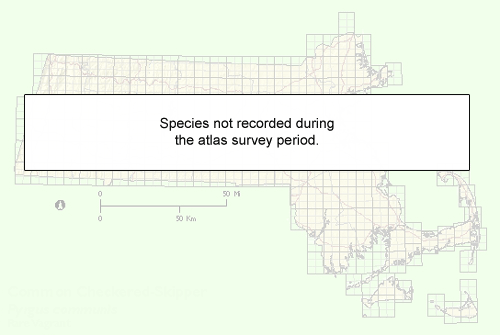Find a Butterfly
Small Tortoiseshell
Nymphalis urticae
Identification
Wingspan: 1 15/16 2 3/8". Superficially similar to Milbert‘s Tortoiseshell but more orange and less solid brown in the basal half of both wings above. Also three distinctive black spots at the center of the forewing above, lacking in Milbert‘s. The very similar California Tortoiseshell, a very rare western vagrant, is larger.
Distribution
Eurasia. Known in North America from very few specimens and/or sight records. One old New York record and four recent New York records 1987-1991: one from Albany and three from New York City. There is one old New England record.
Status in Massachusetts
Known from a single nineteenth century specimen, collected by Outram Bangs, on the wing, in Watertown. The specimen was captured "a few years" previous to 1875, and was exhibited at the Cambridge Entomological Club (Psyche, 1 (19), p. 120 (Nov., 10 Dec.) 1875. The location of this specimen is unknown.

Flight Period in Massachusetts
font size="3">Flies from March to late fall in the U.K.
Larval Food Plants
Nettles (Urtica, spp. Including the widespread introduced U. dioca).
Adult Food sources
Information for this species in Massachusetts is currently unavailable.
Habitat
Information for this species in Massachusetts is currently unavailable.
Life Cycle
Information for this species in Massachusetts is currently unavailable.
Notes
A recent article by Glassberg (Journal of the Lepidopertists‘ Society 46 (4), 1992, 302 304) suggests that Small Tortoiseshells may be breeding in the Hudson River Valley of New York.
Account Author
Brian Cassie



